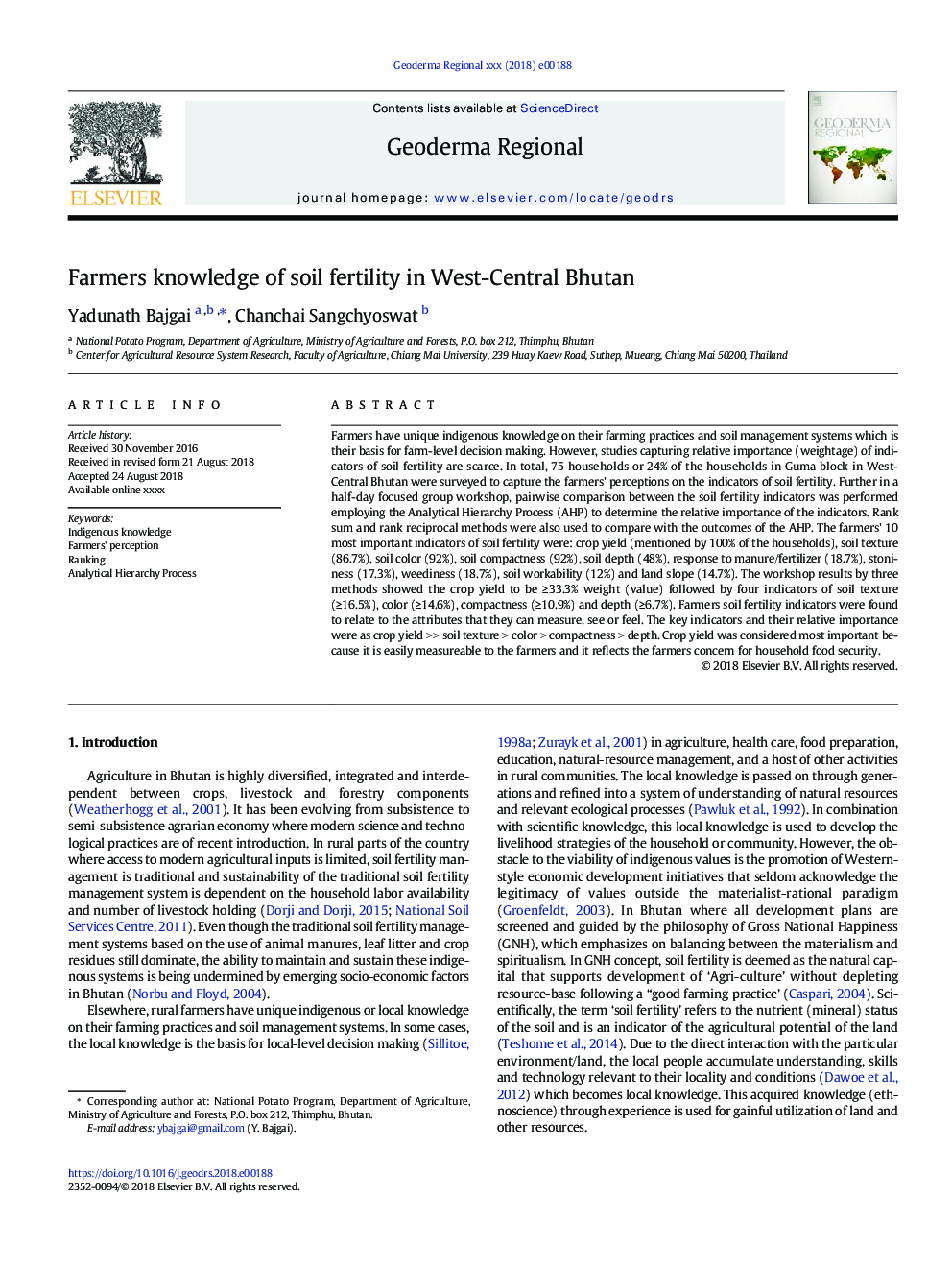| Article ID | Journal | Published Year | Pages | File Type |
|---|---|---|---|---|
| 10115929 | Geoderma Regional | 2018 | 8 Pages |
Abstract
Farmers have unique indigenous knowledge on their farming practices and soil management systems which is their basis for farm-level decision making. However, studies capturing relative importance (weightage) of indicators of soil fertility are scarce. In total, 75 households or 24% of the households in Guma block in West-Central Bhutan were surveyed to capture the farmers' perceptions on the indicators of soil fertility. Further in a half-day focused group workshop, pairwise comparison between the soil fertility indicators was performed employing the Analytical Hierarchy Process (AHP) to determine the relative importance of the indicators. Rank sum and rank reciprocal methods were also used to compare with the outcomes of the AHP. The farmers' 10 most important indicators of soil fertility were: crop yield (mentioned by 100% of the households), soil texture (86.7%), soil color (92%), soil compactness (92%), soil depth (48%), response to manure/fertilizer (18.7%), stoniness (17.3%), weediness (18.7%), soil workability (12%) and land slope (14.7%). The workshop results by three methods showed the crop yield to be â¥33.3% weight (value) followed by four indicators of soil texture (â¥16.5%), color (â¥14.6%), compactness (â¥10.9%) and depth (â¥6.7%). Farmers soil fertility indicators were found to relate to the attributes that they can measure, see or feel. The key indicators and their relative importance were as crop yield >> soil texture > color > compactness > depth. Crop yield was considered most important because it is easily measureable to the farmers and it reflects the farmers concern for household food security.
Related Topics
Physical Sciences and Engineering
Earth and Planetary Sciences
Earth-Surface Processes
Authors
Yadunath Bajgai, Chanchai Sangchyoswat,
